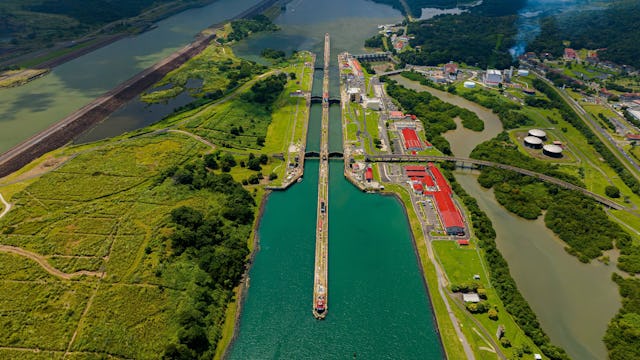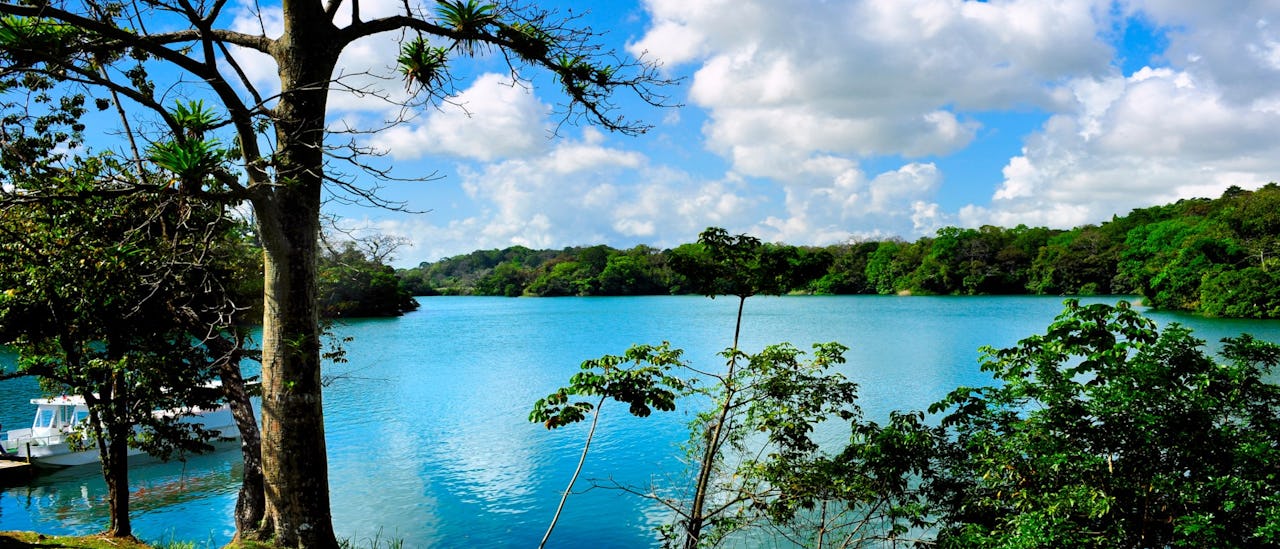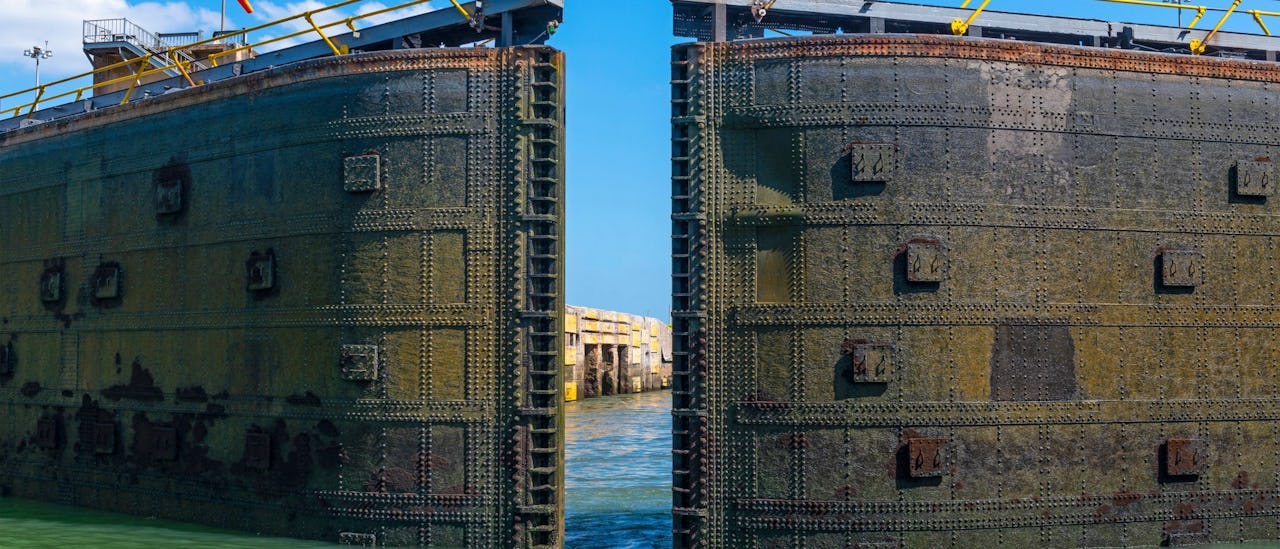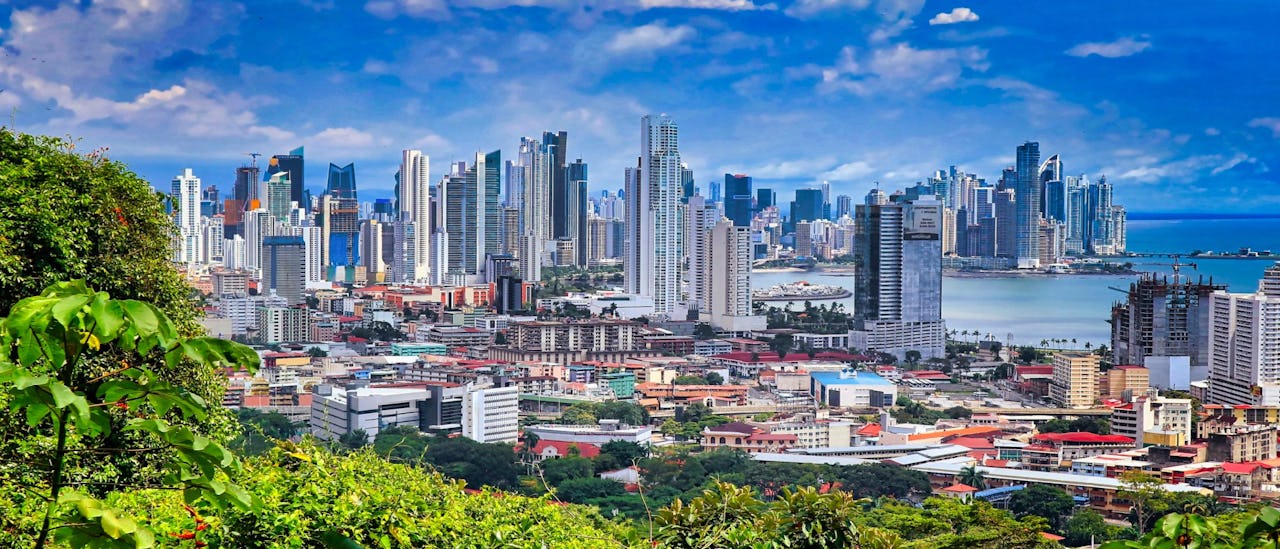Where is the Panama Canal?
The Panama Canal is an artificial, 51-mile waterway situated in Panama. This magnificent man-made canal acts as a connector between the Atlantic Ocean and the Pacific Ocean and cuts across the Isthmus of Panama.

Opened in 1914, the Panama Canal is an essential conduit for international maritime trade. The canal dramatically shortened the distance that ships needed to cover to pass between the two oceans, eliminating the perilous route around the southern tip of South America. Equipped with a system of locks that raise and lower the water level, the intricate engineering of the Panama Canal continues to astound visitors and professionals alike, making it a marvel of modern technology.
The Panama Canal is an artificial, 51-mile waterway situated in Panama. This magnificent man-made canal acts as a connector between the Atlantic Ocean and the Pacific Ocean and cuts across the Isthmus of Panama.

Embark on an unforgettable journey through the Panama Canal, one of the world's most impressive feats of engineering. Sailing this 82-kilometre waterway, you will traverse the Continental Divide from the Atlantic to the Pacific - a voyage that once required a hazardous, months-long journey around the tip of South America. As you pass through the canal's lock systems, marvel at the giant gates opening and closing, while your ship is hydraulically lifted and lowered. Along the way, enjoy breathtaking views of Panama's dense rainforest and diverse wildlife, offering unique insight into the country's natural beauty. Sailing the Panama Canal is not just a voyage; it's an immersive experience into history, innovation, and the spirit of human endeavour.

The canal journey begins on the Caribbean coast with low-lying, marshy beaches and gradually gives way to lush, verdant rainforests teeming with exotic wildlife. At the canal's highest point, you encounter Gatun Lake. This extensive man-made lake is surrounded by thick, tropical jungle which is rich in biodiversity, offering habitat to a plethora of species, including colourful birds, monkeys, sloths and jaguars. As you navigate the canal, be prepared for breath-taking views of the Culebra Cut, the narrowest portion of the canal that slices through the Continental Divide. Here, steep, rugged cliffs create an awe-inspiring backdrop.

The iconic lock system of the Panama Canal is a remarkable feat of engineering. Designed to lift ships up from sea level to Gatun Lake and then lower them back down as they continue their journey, the locks play a vital role in the functionality of the canal. The system comprises three sets of locks: the Miraflores and Pedro Miguel Locks on the Pacific side and the Gatun Locks on the Atlantic side. Each lock has two lanes, allowing the simultaneous transit of vessels in opposite directions.

As you traverse the Panama Canal, several vibrant cities add to the richness of your journey. Colon, boasting Afro-Caribbean culture and significant historical sites like the UNESCO World Heritage Site, Fort San Lorenzo, is certainly a must-visit. Next on the route, Panama City stands as a testament to the contrasting blend of historic and modern, marked by a bustling skyline and the charming Casco Viejo district. The city of Balboa, a legacy of the United States' role in canal construction, served as the administrative centre during this period. It's home to several historical structures along with the impressive Panama Canal Administration Building.